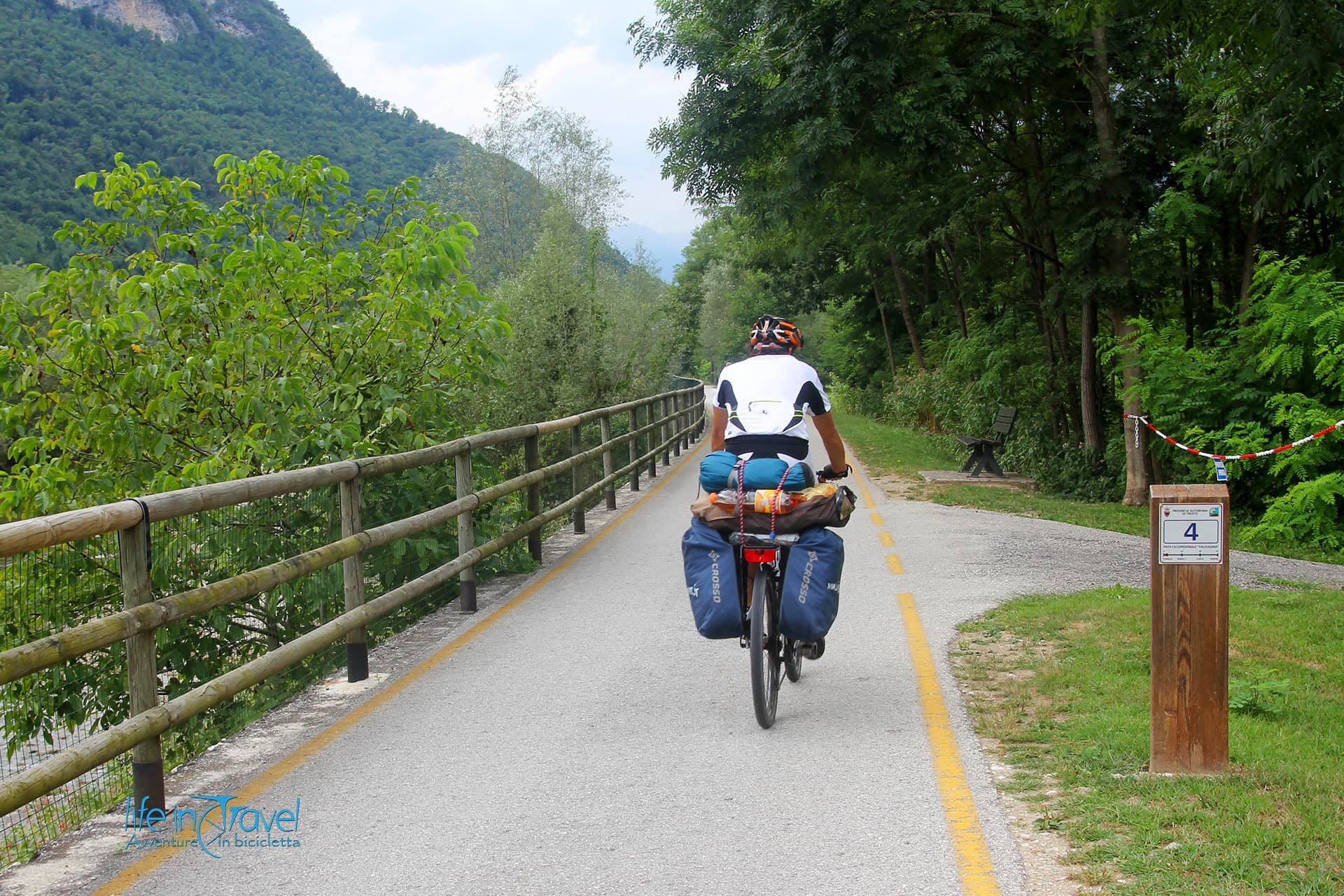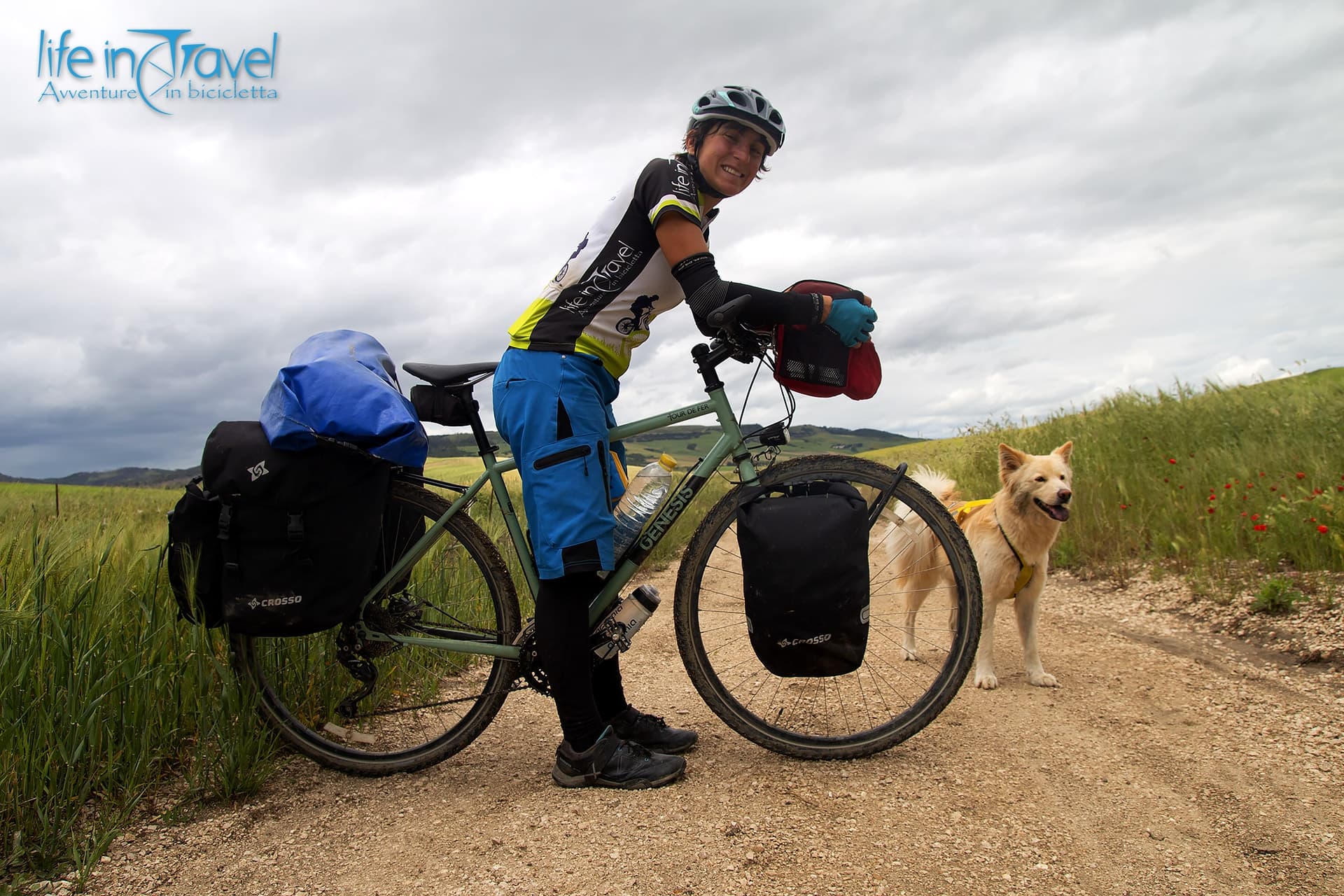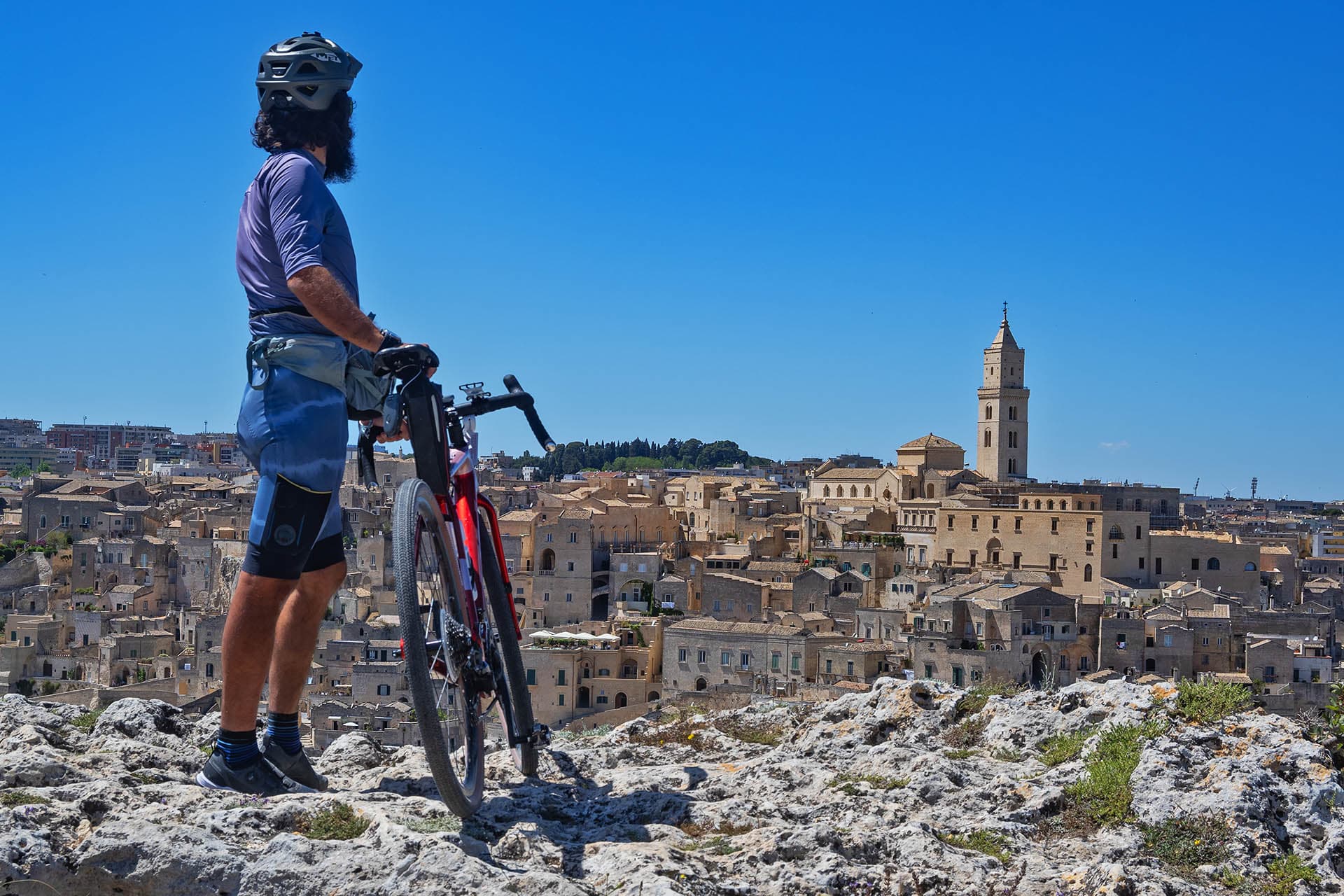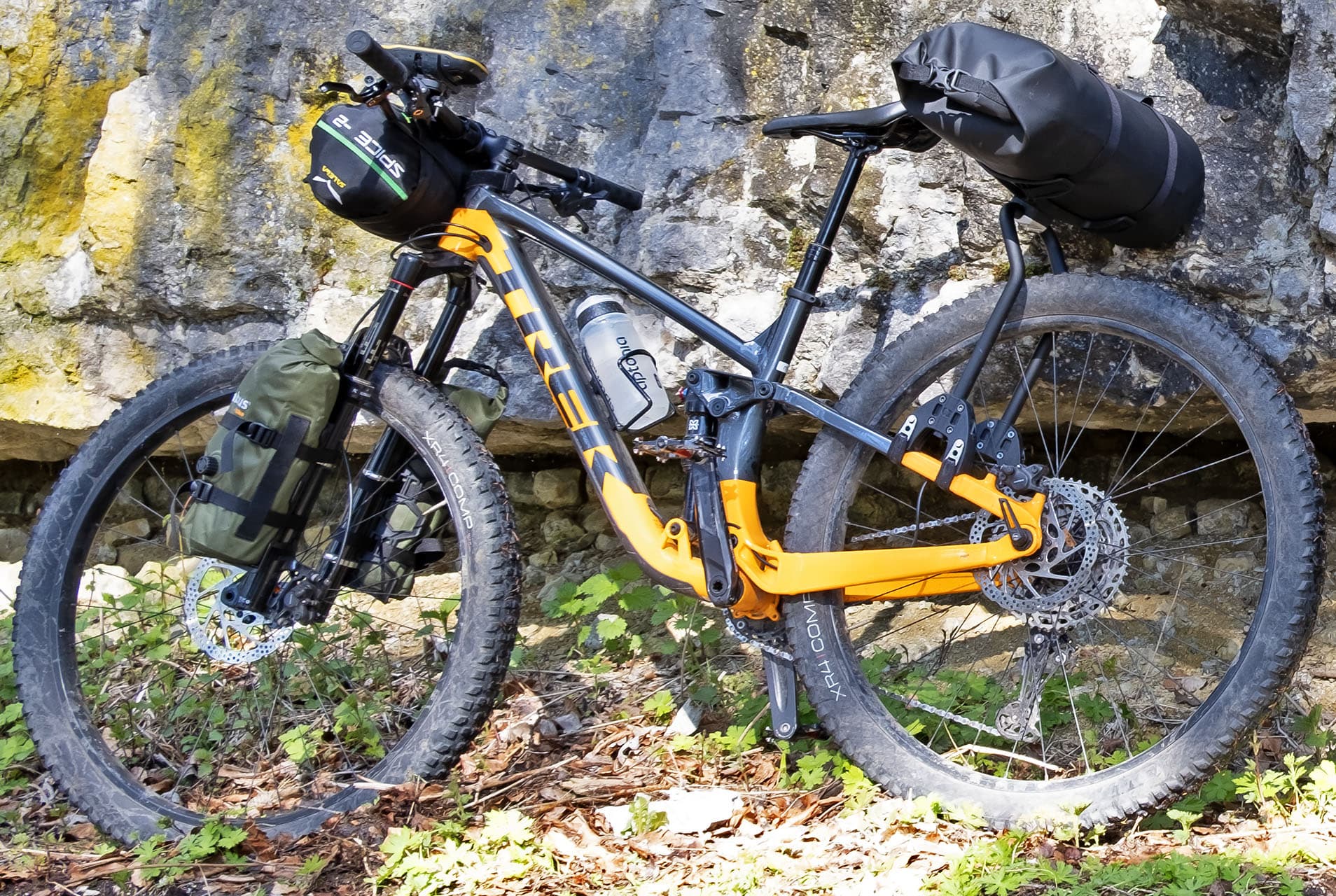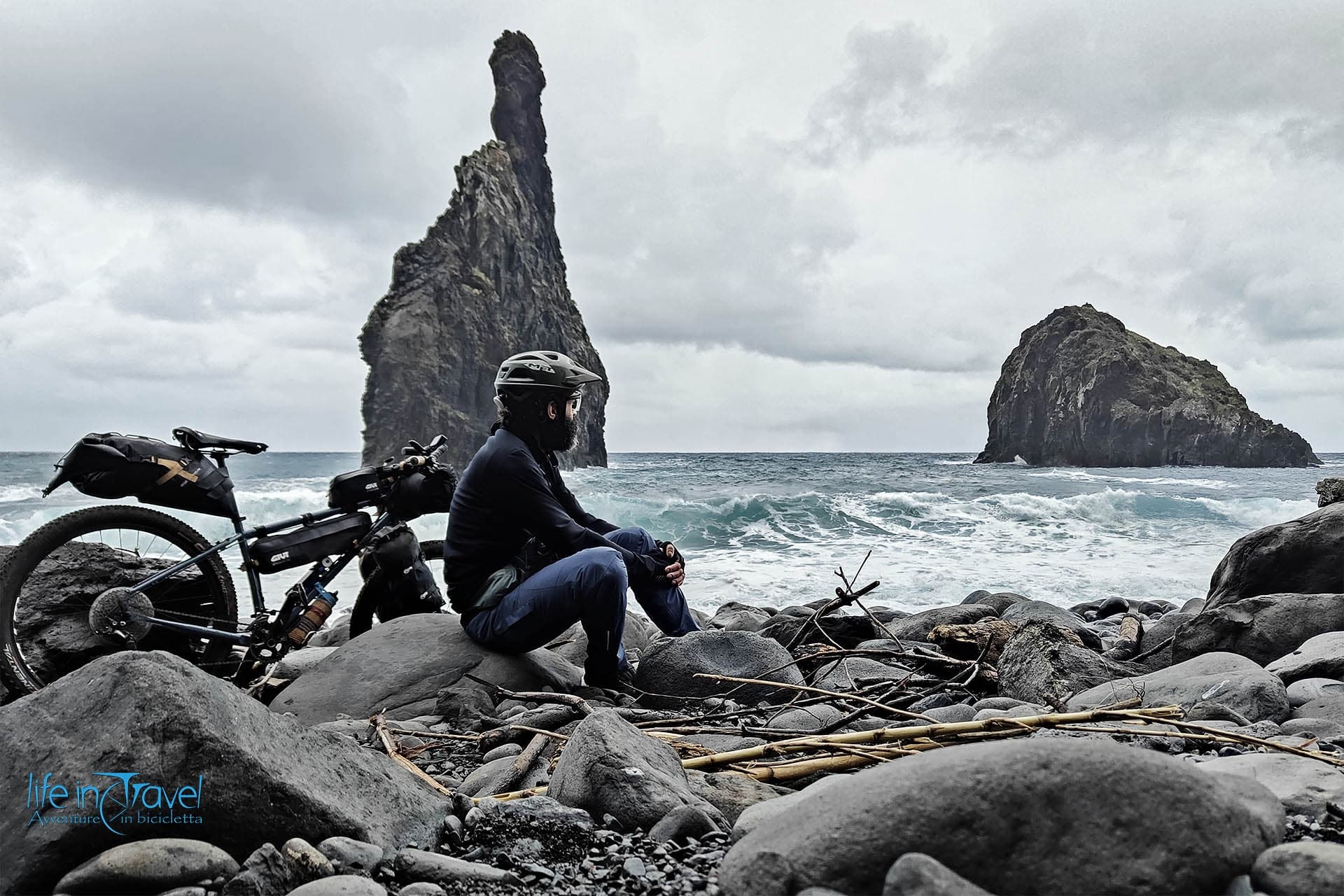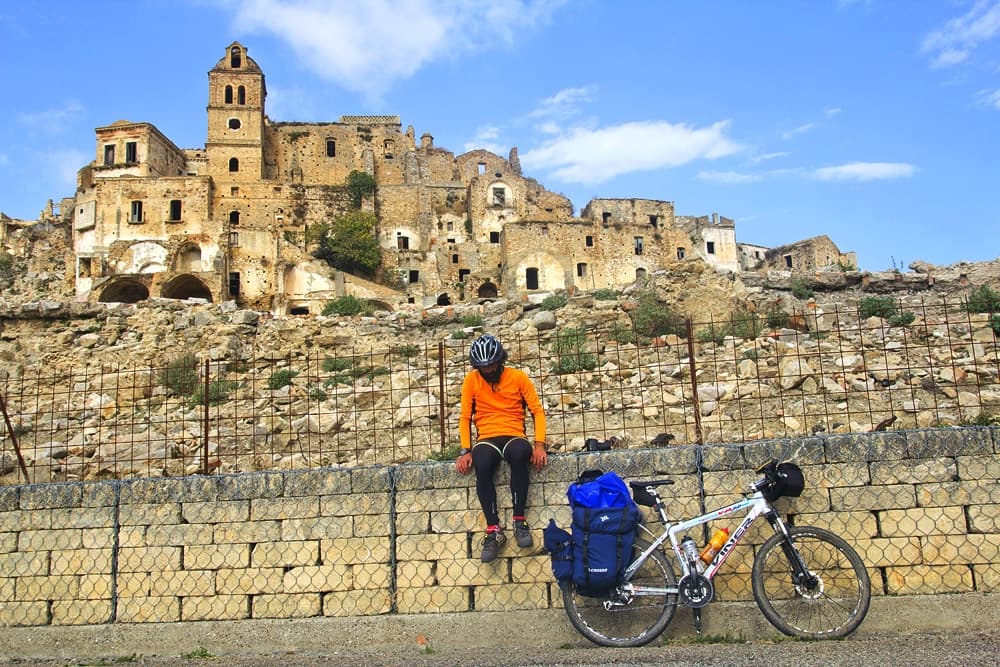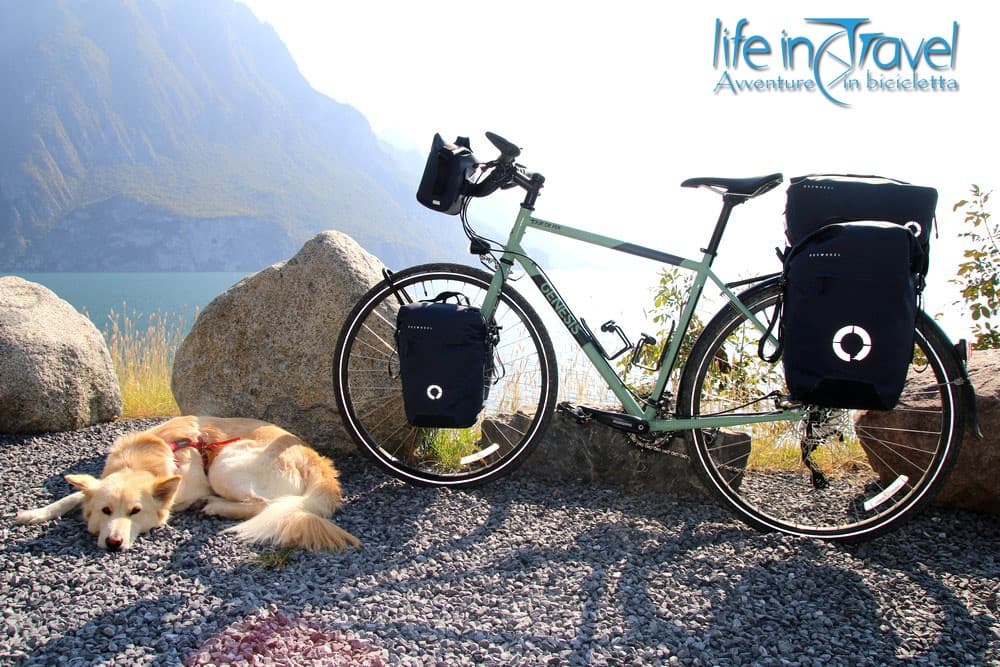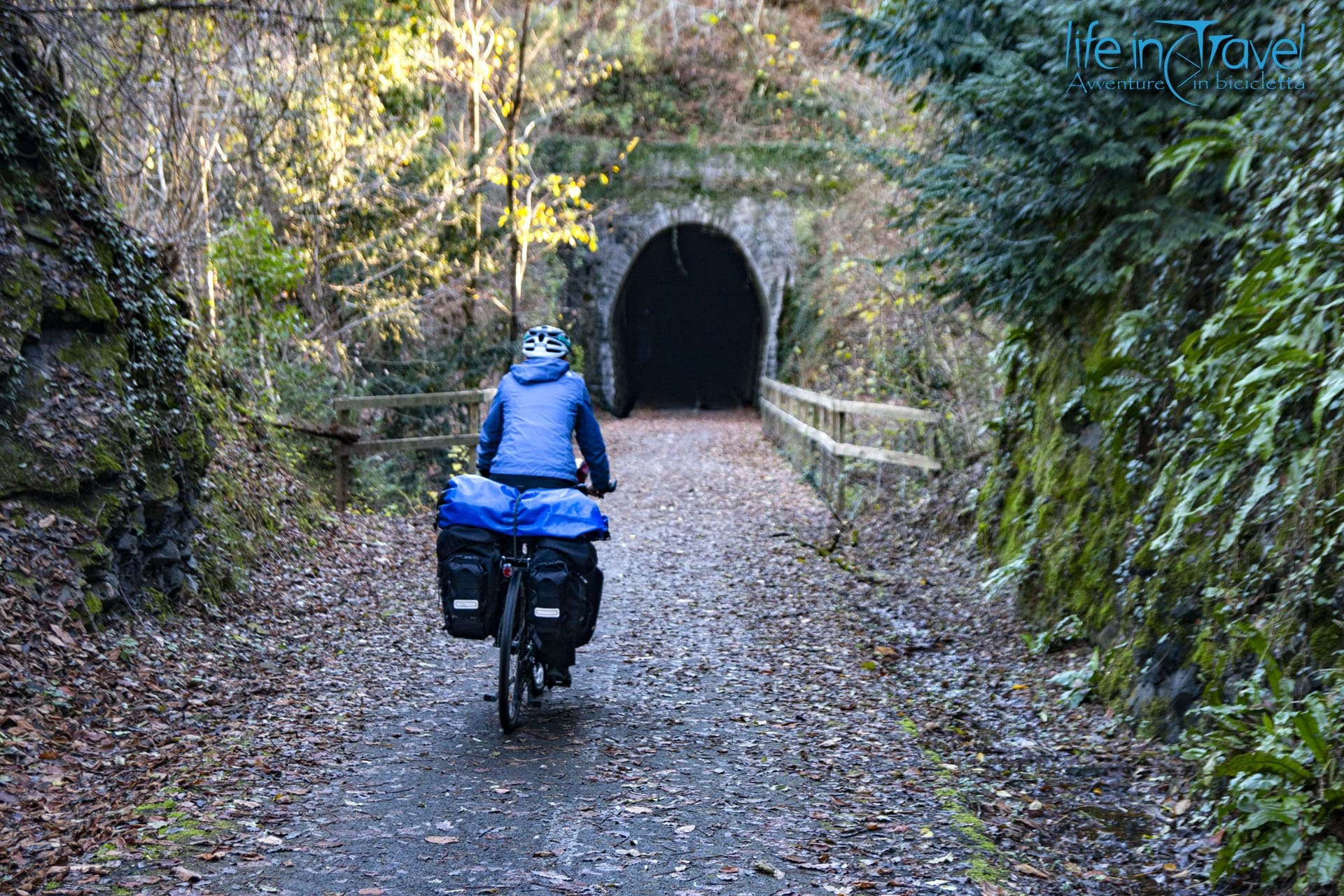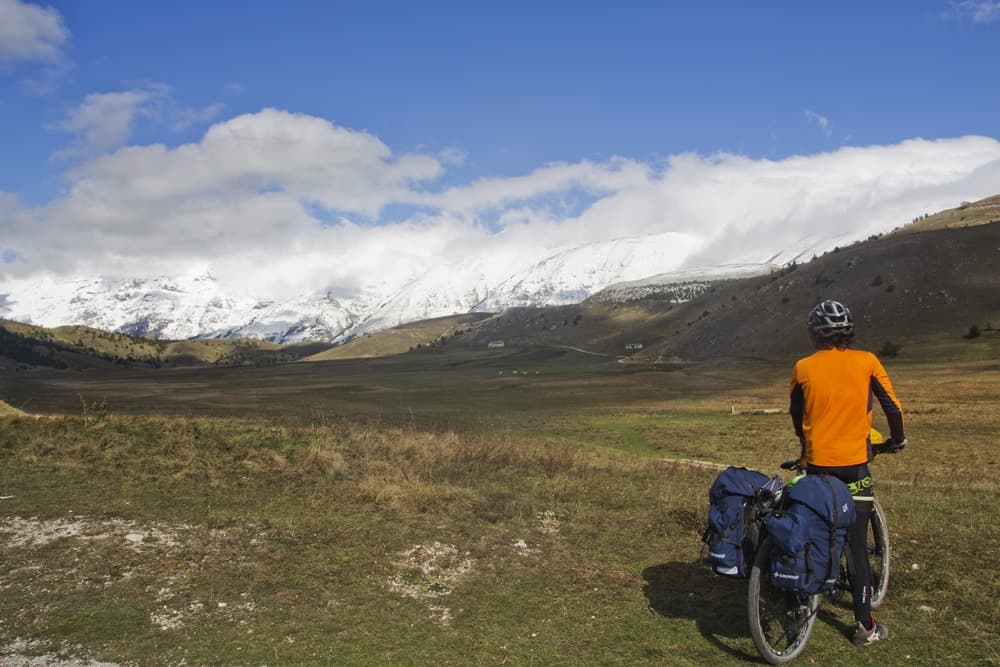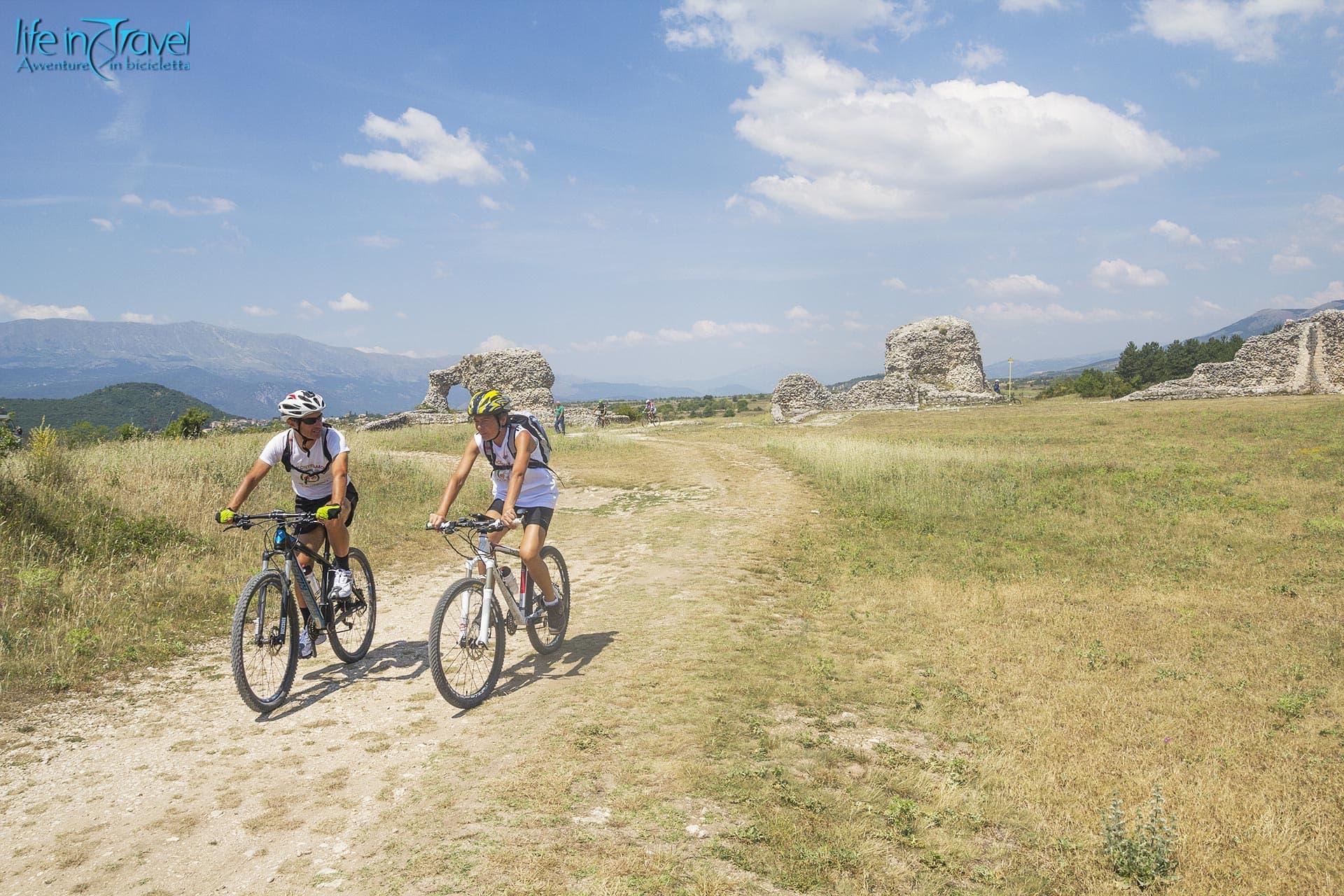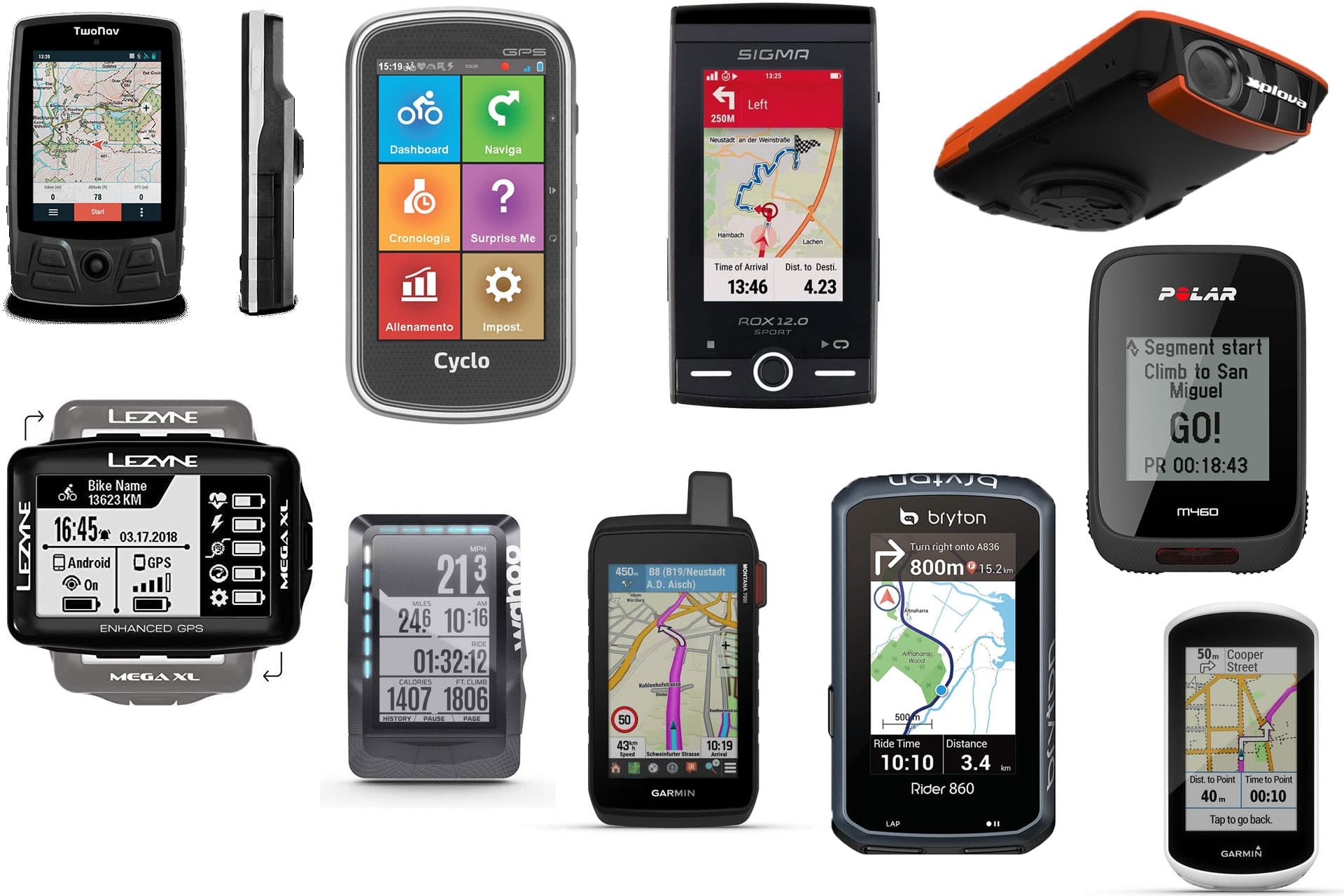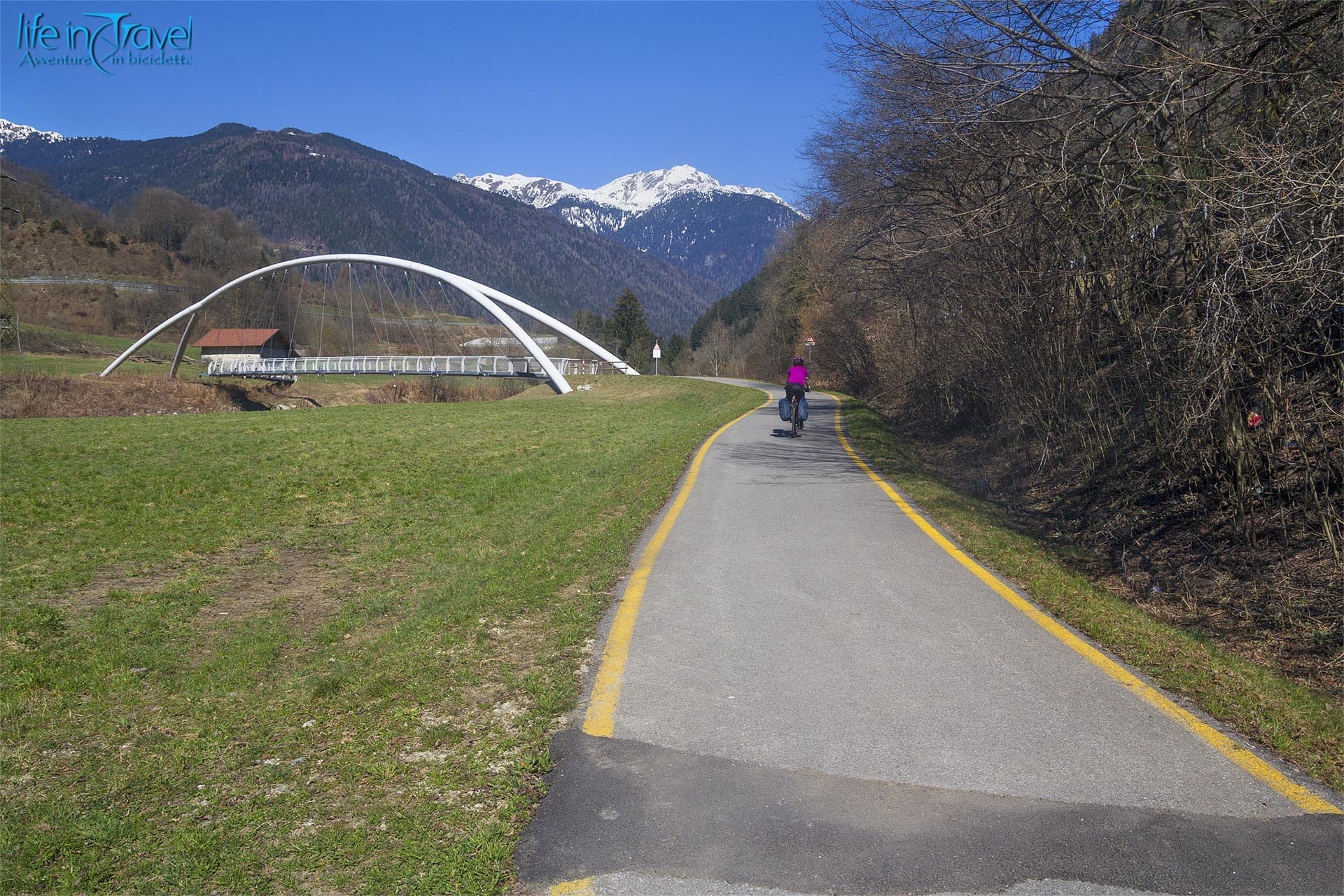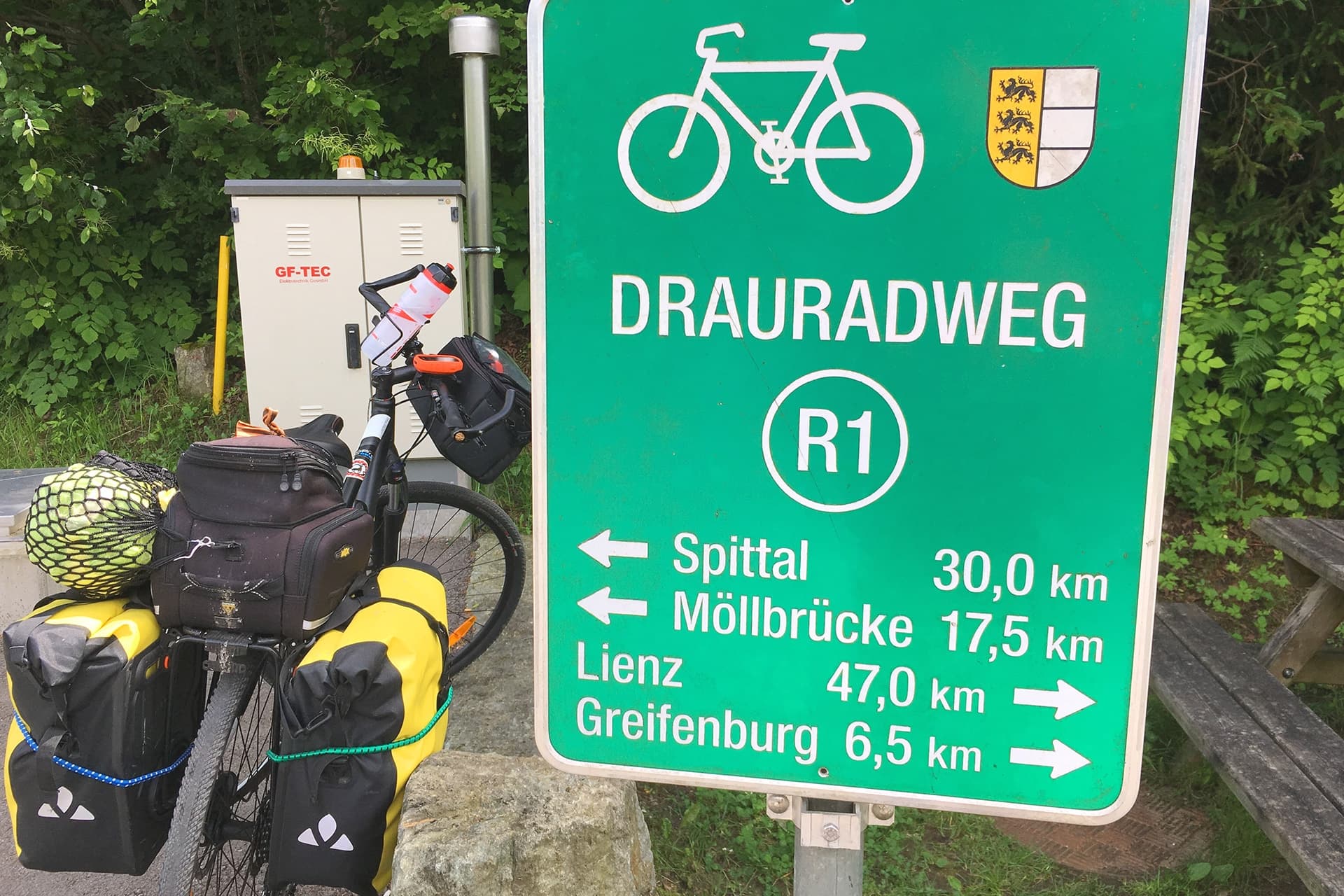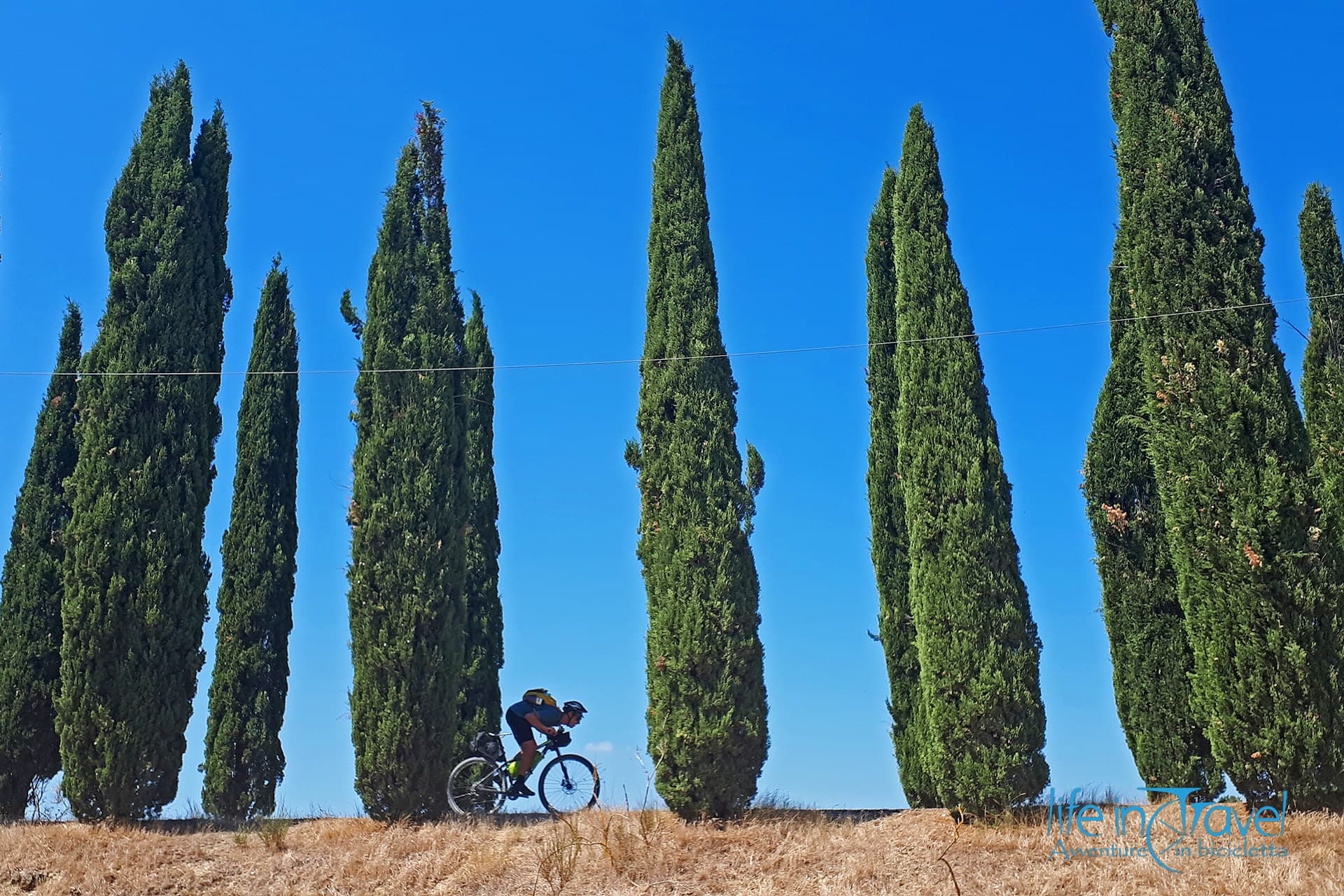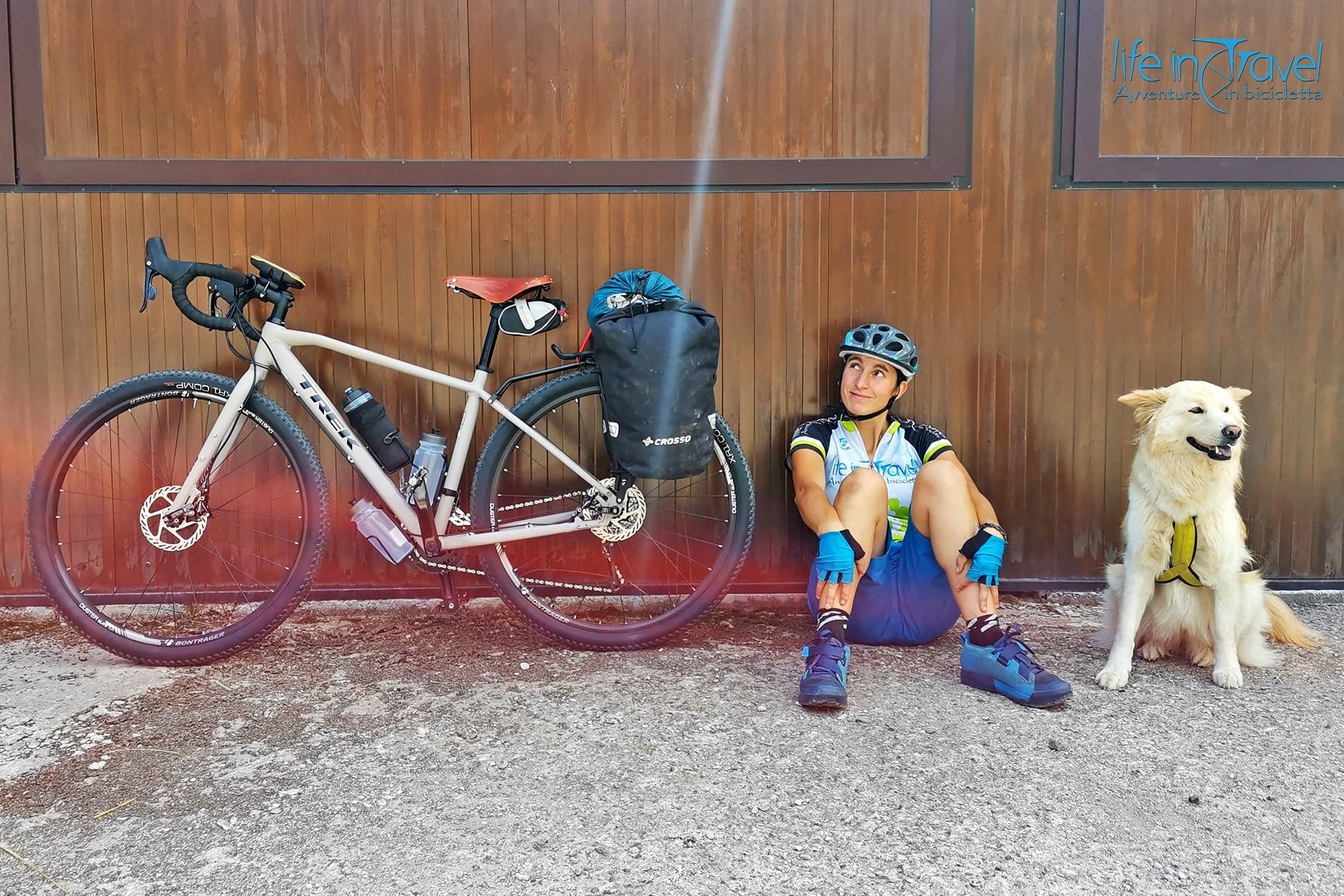The Via Claudia Augusta cycle route is one of the most popular itineraries among German cycle tourists and beyond. It is one of the cross-border paths between Germany and Italy more off the beaten path as it crosses one of the easiest Alpine passes, suitable for (almost) everyone. Let's discover the wonders that are hidden between the Danube and the Po river along the itinerary.
In this article
Organize your trip on the Via Claudia Augusta by bike
As the name indicates, the Via Claudia Augusta cycle path follows an ancient itinerary (there are actually two main routes, as we will see) created by the Romans under the emperor Claudius Augustus. The history of this road has been handed down to the present day by two milestones found in Rablà in Alto Adige and in Cesiomaggiore in the province of Feltre. In both cases, Tiberius Claudius Caesar Augustus Germanicus is mentioned as the architect of this infrastructure which linked the Danube to the Po along a route of 350 miles (about 520 km) traced by Drusus, father of the emperor. The dates are also known: it began between 15 and 16 BC and was completed in 47 AD.
The first milestone can be admired at the Museo Civico di Bolzano while the second was used as a support for an altar in an ancient parish church and this allowed its conservation. Today, numerous copies of milestones have been placed along the itinerary and have become somewhat of a symbol of this Alpine cycling route.
Before going into the details of the route, let's see some information to better organize this bike trip. The main obstacle to get around on this cycle touring itinerary is the one that characterizes all linear routes, i.e. in which the departure is different from the arrival: connect the two extremes.
In this case, the starting point is the town of Donauwörth in Germany while the arrival point is Altino in Veneto. The main cities near these two villages are respectively Augsburg and Venice, both reachable by train. Of course, if you want to connect the two destinations with regional trains on which bikes can be transported without having to pack them according to the German railways site, the times are eternal (at the time of writing 6 changes and 16 travel hours) while the nocturne austriaco which connects Venice to Augsburg does not allow bike transport. Alternatively, by bus there are services such as Flixbus or Euroline which connect Venice to Munich, from where you can then continue towards Augsburg and Donauwörth by other means (train or local bus).

The via Claudia Augusta cycle path is quite popular and therefore shuttle services have been created which allow you to avoid the most demanding climbs, but also to reach the beginning of the cycle path. You can find all the updated information of this service, usually active only in the summer period.
From Donauwörth to Füssen in Germany
Let's assume that we have solved the transport problem and want to embark on our bike journey on the Via Claudia Augusta. The route naturally starts on the banks of the Danube, in the town of Donauwörth. From the station you reach the river and, after crossing it, you immediately head south, a direction that you will practically never stop following.
The Schmutter tributary is the first stream that you follow backwards in a slow but constant approach to the Alps. Near Westendorf you change river and continue along the bends of the Lech until you reach Augsburg. With an easily identifiable name, it is the first major city on the route of the Via Claudia Augusta which in this German stretch often follows the Romantische Strasse, even if the cycle paths here are varied and you can easily change the road at will.
Augusta is the third and oldest city in Bavaria as well as being the largest among those encountered on the cycle route of the Via Claudia Augusta. Definitely worth a stop to admire the Renaissance town hall and the church of St. Peter am Perlach.
Beyond Augsburg the route continues following the river Lech up to the foot of the alpine massif. You pass Schongau before reaching the shores of Lake Forggen. At the southern end of the lake basin lies Füssen in the surroundings of which you can admire the famous Ludwig castles of Hohenswangau and Neuschwanstein.
The Alpine passes in the Austrian Tyrol
Füssen is also the last German town on the route of the Via Claudia Augusta. A little further on, in fact, you will cross the border entering Austria, in the Tyrolean region. The route continues its gentle but constant ascent through the valleys flanked by alpine pastures and by the high peaks of the Reutte nature park dominated by the castle of Ehrenberg. Once near Lermoos, the path of the Claudia Augusta cycle path deviates towards the south, starting its ascent towards the first pass to be overcome. To the east, marking the border between Tyrol and Bavaria, the Zugspitze dominates imposing the horizon, aware of being the highest peak in Germany
The Weiβensee and Blindsee lakes anticipate the arrival at the Fernpass, the first major obstacle of this crossing of the Alps just over 1200m above sea level. The following descent, albeit short, offers some adrenaline-pumping bends to plunge into the valley of the most important river in this part of Austria, the Inn. Imst is a lively center but cozy and pleasant to cross on two wheels.
In this Tyrolean town, take the Inn cycle path, following the stream to its source. After about twenty kilometers you enter Landeck, at the confluence of the Inn and Sanna. The landscape is dominated by the castle and the surrounding high alpine peaks. The horizons narrow as you begin the ascent towards the upper Inn valley. Between Pfunds and Martina the river also marks the border between Austria and Switzerland and for a while you cycle in Swiss territory, until a sudden uphill winding bends makes you leave the banks of the river to reach Nauders. The town is the last in Tyrol before reaching the Resia pass and its lakes which mark the entrance to Italy and the entrance to the cycling path of Val Venosta on the banks of the nascent river Adige.
The cycle paths of Trentino-Alto Adige
The first local section of the Via Claudia Augusta cycle itinerary follows protected routes that are among the most popular and popular in Italy. The entrance from the Resia pass leads to the banks of the artificial lakes. Skirting them on the eastern side, you reach one of the iconic places of the entire street: the bell tower of Curon Vecchia which emerges from the waters not far from the western shore of Lake Curon. A short detour is a must to admire this bell tower, the only remaining testimony of the village of Curon Venosta, submerged by the waters of the artificial basin built after the war to feed a hydroelectric plant. 
The route at the end of the Muta lake begins in a rapid dive passing through Burgusio and bypassing the plain where Malles stands, the town that is a point of reference in the upper Venosta Valley and the arrival station of the railway. Instead, you enter Glorenza, a very suggestive fortified village. The itinerary of the Via Claudia Augusta continues along the valley floor, always skirting the course of the Adige river which gradually becomes more adult. Immense expanses of orchards, come onapples with apricots, accompany the cyclists on this journey that has veered decidedly towards the east.
In Prato allo Stelvio the most daring could have a moment of hesitation and linger with their gaze towards the infinite hairpin bends that would lead towards one of the most well-known Alpine passes by cyclists from all over the world and the second highest passable pass in the Alps, the Stelvio. Claudius Augustus wisely avoided making his road climb so high, making it continue towards Schlanders, Castelbello and Naturno. A series of hairpin bends takes us out of the valley and through Forest, right next to the establishment and shop of the well-known Forst beer. Consider a stopover if you are low on mineral salts!????
You enter Merano early, a city suitable for bikes, where you can stop for a bit of relaxation at the Spa or to visit the Trauttmansdorff gardens. By now we can consider ourselves out of the lively and undulating alpine routes even if the mountains that flank the valleys show the opposite. The Adige cycle path advances now almost completely flat and the negative difference in height is negligible.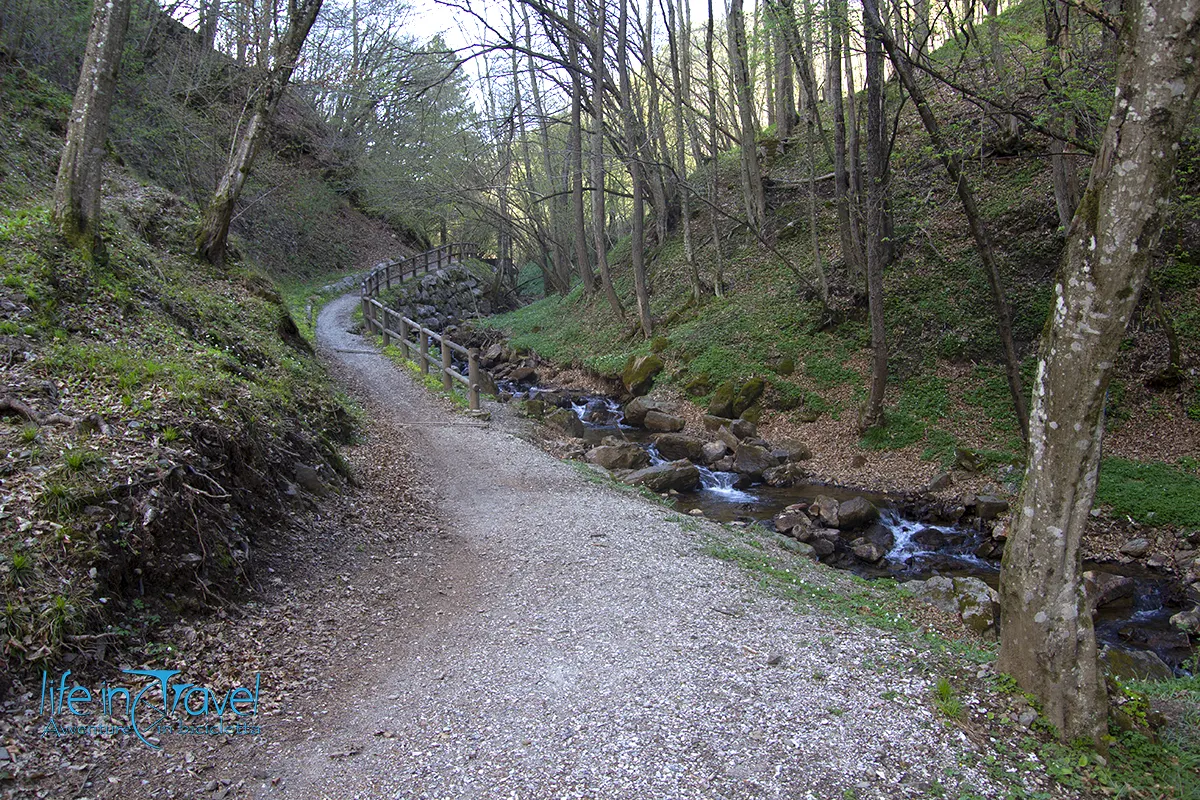
Leaving an iron bridge on the right which bears witness to the passage of an old railway, which today has become Oltradige cycle path towards Caldaro to cycle south. A little further on, a crossroads at the confluence of the Isarco and Adige rivers allows us to detour to the north-west and enter the city of Bolzano, while the Via Claudia Augusta itinerary continues southwards and begins crossing the countryside at the bottom of the valley. Vineyards and apple orchards dominate as you pass the centers of Ora, Egna and cross the border between the provinces of Bolzano and Trento, leaving Alto Adige. Further south it cuts across the Rotaliana plain, home of Teroldego wine, to finally reach the city of the Council.
Trento represents a crucial node on the Via Claudia Augusta as here you can choose whether to continue towards the Po or towards the Adriatic. The two final ports of Altinum (marine) and Hostilia (fluvial) were perfect landing points for continuing the journey with an ante-litteram form of intermodality and for this reason they were both connected by the Roman Alpine motorway .
Via Claudia Augusta "Altinate" up to Altino (Venice)
Trento, its Piazza Duomo and the Buonconsiglio castle deserve a stop, also to regain strength after completing the crossing of the Alps.
The path of the Via Claudia Augusta "Altinate", which will take you to the Adriatic Sea and a stone's throw from Venice, cannot be said to become easy from here on out. In fact, the ups and downs will be a constant. Leaving the provincial capital of Trentino, you will have to climb a little to reach Valsugana. If you want to stay faithful to the route, once in Civezzano you will have to gain altitude towards Madrano before descending to Pergine Valsugana.
Here too, the Via Claudia Augusta will not follow the road in the valley, overlapping the Valsugana cycle path but it will remain on the northern slope where the old road road runs < strong>state road which goes around Lake Levico to the north passing through the Austro-Hungarian fort of Benne before reaching Levico Terme. Only here, for a few kilometres, will you join the cycle path that runs alongside the Brenta and then leave it again at Marter and pass through the towns of Roncegno and Borgo Valsugana. Another roughness awaits us: a gentle but inexorable ascent begins to reach the Tesino plateau, home of Alcide De Gasperi. 
Passati Pieve and Castello Tesino you will enter Veneto with a series of bends downhill towards Lamon. Having therefore crossed the Cismon torrent, the ascent to the Croce d'Aune pass will begin, not impossible but nonetheless demanding. The dive on Pedavena, dominated by the huge brewery, will lead to the gates of Feltre, a pretty town that deserves a few hours of our time. A little further on, the itinerary will continue towards Cesiomaggiore, the place of discovery of one of the two milestones on which invaluable information on the Via Claudia Augusta and its construction is indicated.

The journey continues and, beyond the Piave, the last demanding ascent begins, the Pradadego pass, before reaching the Po valley towards Pieve di Soligo and Nervesa della Battaglia, once again on the banks of the river sadly associated with the events of the Great War.
You enter Treviso from the north to join the Sile greenway for a few kilometers which will lead you to Quarto d'Altino. The banks of the Zero river will be our travel companions up to Altino, not far from the Venice lagoon and in particular from the islands of Torcello and Burano. The route ends here, after about 750 km of history, nature, alpine gastronomy and many places to stop the bike tires for an exploration.
Via Claudia Augusta "padana" up to Ostiglia (Po)
Unlike the Via Claudia Augusta "Altinate" which requires a bit of effort even after leaving Trento, the "Padana" one has a practically flat altimetric profile from Bolzano onwards. In fact, the itinerary is much more linear, following the cycle path of the Sun and remaining on the banks of the Adige river up to Verona. You first pass through Rovereto, a city with lively cultural activity with the MART (Museum of Modern Art) and the Great War museum, to continue towards the Veneto. Past Rivoli and its strong Wohlgemuth you pedal more or less quickly towards the city of Verona, still on the banks of Italy's second largest river.
The city of Romeo and Juliet is not exactly the most bike friendly in Italy, but it is still fascinating to visit, with the Arena and the house of the two lovers. Leaving the urban agglomeration you will turn towards Sommacampagna in the cultivated plains of the Veneto, passing through Custoza and Villafranca before returning to take the route southwards and head towards Vigasio. Slow but inexorable we will take us to the banks of the largest river in Italy, entering the ancient port of Hostilia.
This concludes, more sadly after about 680 km, the Po valley itinerary of the Via Claudia Augusta, in a town that allows connections with numerous other paths dedicated to cycle travelers (Eurovelo 8, for example or the cycle path of the Sun towards Bologna) .

